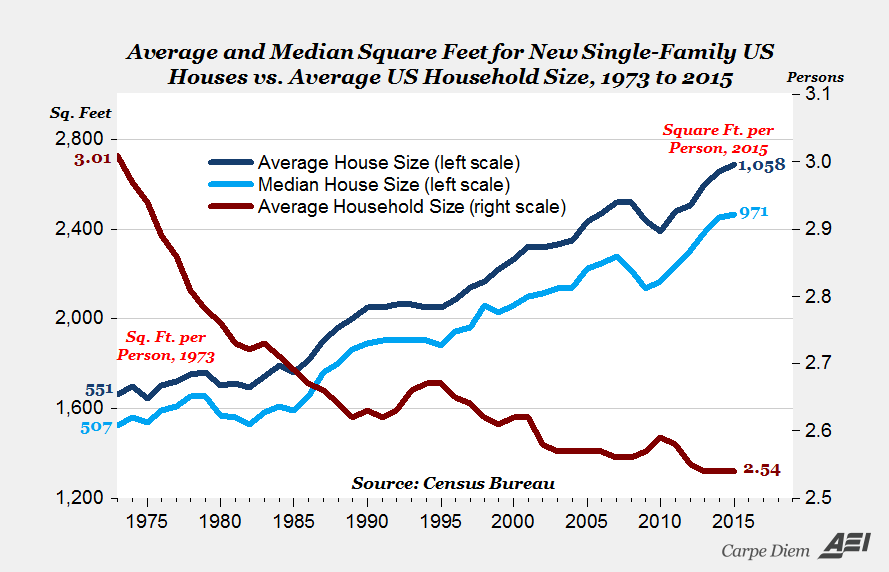
City Journal‘s latest issue includes a fascinating must-read that opens with this portrait of an admirable mother of three small children who works about 20 hours per week on something like four jobs:
Yet for a woman who calls herself a stay-at-home mom (SAHM), [Kristen] Whirrett spends much time working. During her children’s nap-time and on Saturday mornings, when Andy takes the kids, she runs a blog, Joyfully Thriving, which documents her household-management strategies. It brings in revenue from affiliate sales and ads. She produces custom books for events, such as graduations, writing these at night, after the kids are asleep. She teaches piano two afternoons a week, six hours total, while her parents babysit. Then she spends another three hours per week on social-media work for various churches, fitting this work in wherever she can.
Later, the author mentions another mother who works as a part-time travel agent, often working from 3 a.m. to 7 a.m. to fit in work before her kids wake. I can identify. My husband and I both work full-time and are the parents of five kids, the oldest of whom is 7. We use four hours of outside childcare a week, which is ideal for us both for the expense but also because we really do want to take care of our own kids.
For this, we thankfully don’t have to wake at 3 a.m. (unless that’s when the baby decides to nurse), but we do work largely opposite shifts and I work flexible-enough hours from a home office equipped with baby gear. Yes, it can get hairy, but overall I am extremely grateful for the abundance of good in our lives.
Whenever I somehow manage to fulfill a speaking invitation, the No. 1 question from young women in the audience, by far, is “How did you get that kind of gig?” They want it, too. Now, I’m not actually sure most women want to work 50 hours a week, plus occasional travel, while popping out a baby every 18 months. That apparently is my own special brand of crazy, and many people legitimately wouldn’t want that kind of life. But I am sure that most women want a side gig, and City Journal article author Laura Vanderkam backs that with opinion polls.
Most moms do want to work, but part-time. The holy grail for moms is flexibility — because sometimes the kids don’t nap, sometimes they (or a parent) get sick, sometimes a fellow church member needs someone to watch her kids for six weeks after major surgery. Sometimes we’d like to just enjoy a beautiful day with a spontaneous family trip to the lake.
Yet Vanderkam notes that because the working world is still heavily biased towards the industrial-age five-day, 9-to-5 work week, “many women wind up doing low-paying activities that don’t fully leverage their economic capacities…Together, employers who think more flexibly about work and caregivers who think more strategically about their options can turn lots of unused capacity into mutual benefit—as long as policymakers don’t stand in the way.”
This can lead to a wasteful and sad misuse of women’s talents and ambition. I suspect this dynamic accounts for a lot of the moms who feel pressured to hustle their friends into buying overpriced multilevel marketing wares of trivial value at house and Facebook parties. That often amounts to women attempting to tap a finite pool of their social group’s resources, or tapping their husbands’ more substantive wealth generation, rather than making significant contributions to the world that they would be more likely to pursue if there were better outlets for those drives. Here’s Vanderkam:
‘There is a huge untapped capacity to be found in the many women who would happily work the 20–30 hours a week that their kids are in school,’ [Tami] Forman [who runs a work onramp nonprofit] says. Pew finds that more than 10 million women are at home with their children. If 5 million wanted to work 20 hours per week, that’s 5 billion annual hours of possibility, with much of that time (according to the Redbook time diaries) currently spent on housework, television, or online activities that women would jettison for the right opportunities. ‘Why businesses can’t find a way to leverage that is beyond me,’ Forman says.
In other words, really, how many super-smelly candles and essential-oil-smeared leggings and organic face creams sourced from Zambian orphans do we really need, and how much social value does buying bucket loads of them out of pity and pressure really create, as opposed to freeing women to create more socially useful goods and services? It could be* a huge social waste for a woman who trained as, say, an architect, lawyer, engineer, or etymologist to spend her time post-kids hawking Tupperware.
This, of course, is why women with those kind of economic opportunities often keep working post-babies, or have the niche market power to craft part-time arrangements with an employer who really wants to buy their talents. But why should only women like me, gifted with the right combo of luck and white-collar aptitude, have the power to negotiate creative work arrangements? Why shouldn’t teachers and accountants and store managers and secretaries and whatever else also have the power to propose mutually agreeable work arrangements that transcend the 9-to-5?
I came up with a couple of reasons, but feel welcome to suggest others in the comments or hit me up on Twitter.
1: We Overpay for Houses Because They’re Bundled Into Schools
Vanderkam points out that it can be difficult for families to live exclusively on one spouse’s income, and that’s one pressure leading women to scramble for side income. This is a bit mystifying to me, since the cost of living has dropped like a stone in the past century and our spending on luxury goods like eating out, vacations, disposable health and education services, and bigger houses has all gone up.
Economist Mark Perry has a regular blog series pointing out how home sizes have increased while family sizes have shrunk. Given that housing is among the biggest family expenses, reducing square footage per family member is a great way to conserve.

As Sen. Elizabeth Warren pointed out before political optics made her shun this reality, something else they have little control over soaks family incomes, too: the link between housing and schooling. The truth is that every single family pays tuition. Most just don’t realize it because K-12 tuition is bundled into our rent and mortgages.
People stretch their budgets to the max to get their kids into a better school district. That desperation and lack of options gives those districts a longer leash for non-classroom bloat spending, which creates a cycle of irresponsible spending both individually and socially. It is also the root cause of today’s dramatic school segregation, as fewer minority families can afford to stretch their budgets enough to swing better schools.
“Families with children really put themselves out to get into a neighborhood that has decent schools,” Stephanie Coontz, a historian of American family life and a professor at Evergreen State College, told Vanderkam. “Two earners are going to outbid them all the time.”
Creating education savings accounts, which deposit a child’s education-dedicated funds into a personal account parents control, would reduce this pressure on incomes while allowing a proliferation of education tutoring, teaching, and consulting opportunities, especially for women. After all, the vast majority of teachers are women, and many would love to kick the politics-infested environments that are the main reason teachers quit. So this policy would be a two-fer for women, by reducing pressure on their family income that drives them into gigs they don’t especially like, and creating entrepreneurial opportunities for part-time, creativity-driven, even home-based income.
Reason 2: Government Is Far Too Bossy and Ossified
Another big reason the work world is hostile to female creativity is government interference. Regulations favor big business instead of the little gal, the 40-hour work week with expensive mandated benefits, and places that can hire accountants and lawyers for compliance and to get new ideas through myriad regulatory gatekeepers before they can hit the market. “Many [women] just don’t want to work in the way that men traditionally have done—40 hours a week, at regular times, with no long voluntary interruptions,” Vanderkam notes.
To this end, every repeal of business regulations especially benefits women, because it allows for the flexible opportunities they want desperately. And I do mean “every repeal.” My midwife works from a beautiful home office her husband built. She brings her babies in the office and on client visits, and so do her nurse assistants. Talk about a woman-friendly business. Yet not only do employer-employee regulations soak up time she’d rather spend caring for her female clients, so do health-care and financial regulations, which are beyond ridiculous.
Every single regulatory rollback is good for women. We work in every economic sector these regulations affect, and these rules get in our way. Want to trust women? Stop telling us what to do. We know far better than that other “oppressive institution of the patriarchy,” bureaucracy.
A regulation-choked environment also funnels the lucky few women who manage to outcompete others into the few freelance, home business, flexible job opportunities available, and gives them less leverage for job negotiations because the number of similar opportunities is so small. Vanderkam’s article details a veritable scrum of women attempting to fill the rare truly woman-friendly opportunities.
Right now, that means shifting to these arrangements could mean major cost savings for companies. That would be a first-step win for women. But a second-step win would be so many companies offering those kind of jobs that employee leverage equals that of the companies.
Reason 3: Corporate Is Captured By Outdated Feminist Ideas
The patriarchy is a 9-5 with mandated benefits. We’re suffocated with big employers talking a huge game about how woman-friendly they are. They have mentorship programs, they promote women qua women, they push for supposedly “woman-friendly” government programs like inflexible family leave and daycare subsidies that redistribute the fruits of other women’s labor and lock us into man-style job structures.
This is the economy on terms that are convenient for big business, not on terms that women themselves think are ideal for women. It’s all rah-rah PR. Well, it’s time for that PR to be backed by action. Put your policies where your mouth is, business.
Leslie Loftis at Iron Ladies — from whom I found Vanderkam’s article — regularly notes that for decades now, a few “queen bees” have pretended to speak for all women’s interests, but instead have done so in a manner that grants them control over all women’s opportunities in ways we all don’t prefer. These professional feminist types have carefully and specifically quashed the flexible work arrangements many women want badly, deriding them as the “mommy track” and telling other women we all have to act the way they want or else it hurts their boring, conformist vision of “gender equality.”
Leslie suggests these women are taking out on the rest of us their frustrations at the outcomes of their work-life choices. Well, that’s something they can work out with their therapists. As for me, and millions of other women, we want the freedom to speak and work for ourselves.
*I say “could be” because these women deserve the freedom and respect to make their own judgments about whether investing their full energies into their children is a worthy tradeoff to pausing or off-ramping their careers. It is NOT socially wasteful for bright women to decide that their kids merit their exclusive attention.









